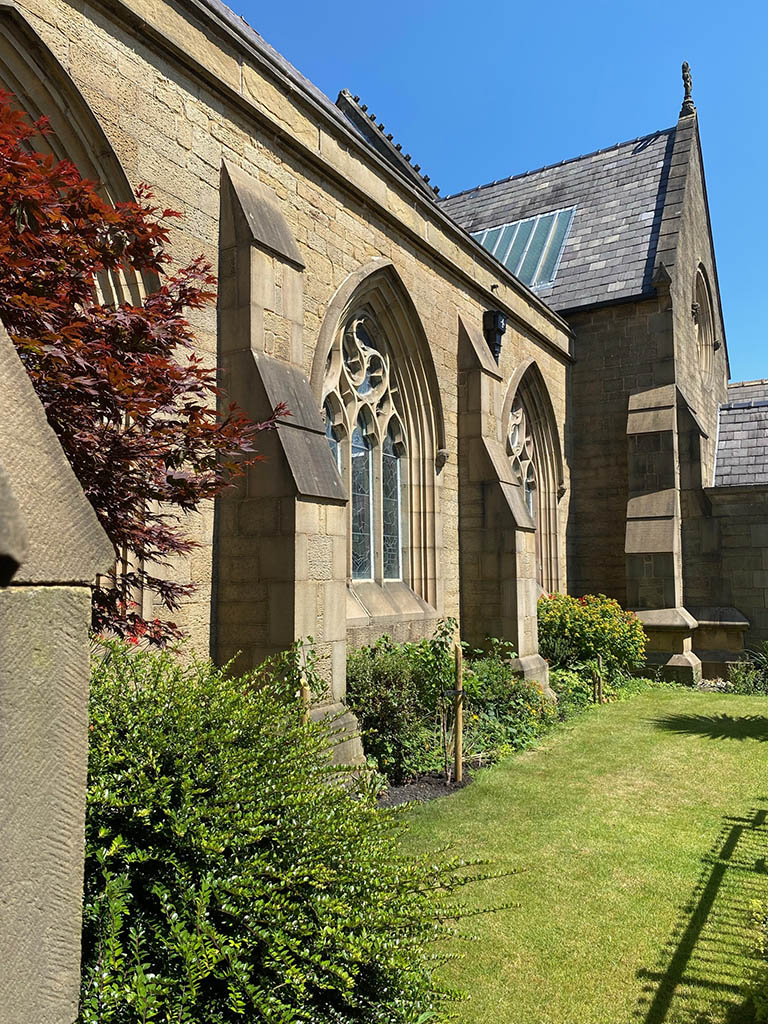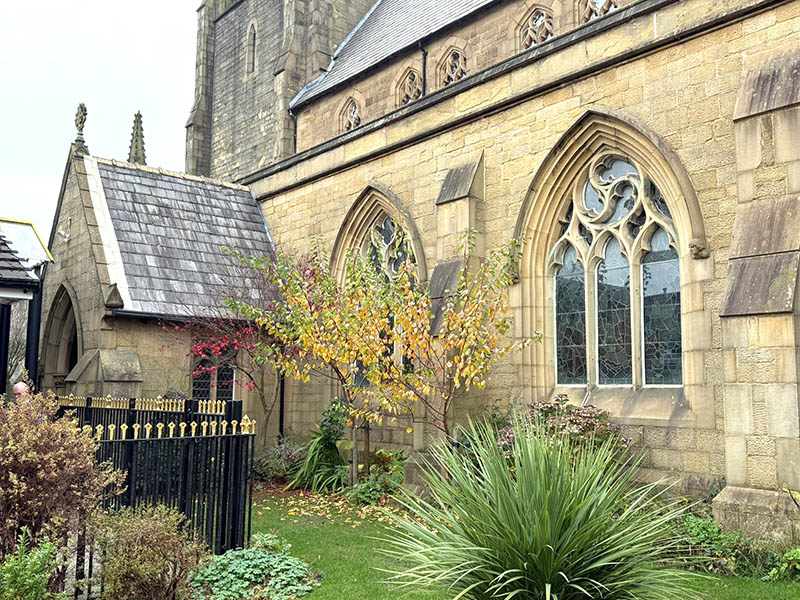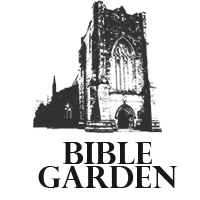What is a Bible Garden?
Designing and creating a garden is always a pleasure and a challenge at the same time, especially a themed garden. A Bible Garden is no exception, on the contrary, it poses some specific challenges, which will be explained later.

For Christians, a church is the House of the Lord, and it is, therefore, appropriate that it should be surrounded by a beautiful garden. The type of garden you’ll find around a church is determined by many factors, such as its geographical location, surrounding community and buildings, the amount of money that can be spent on maintenance or the number of willing parishioners who are able to help with the upkeep. But it can be more than lawns, pretty plants and a car park. By looking to the Bible for guidance when selecting plants for the church garden, you will be rewarded with the opportunity to create a garden that reflects Christian values and hopefully inspires others, too, to read the Scriptures. It can have botanical, historical, and religious educational value, and have a contemplative and spiritual function. A Bible Garden can bring the Scripture to life, with an opportunity to experience the beauty of God’s creation.
Nature and gardens have been important to people since biblical times. In the very beginning: "the Lord God planted a garden in Eden" – the Garden of the Lord - where Adam and Eve lived (Genesis 2:8 & 9); in this garden, there was an abundance of plants, including trees (Genesis 1:11 & 12).
More than 100 different plants are mentioned in the Bible of which more than 36 are trees. People relied on plants, and especially trees, as source of food, timber for building, fodder for animals, for furniture making and fire. Their resin was used for rituals, other parts for medicines, and their shade was obviously welcome in the heat of the day.
The wisdom of the Bible itself is like "a tree of life" that can help us to live a faithful life.
A faithful man "is like a tree planted by the streams of water that yields its fruit in its season and its leaf does not wither. In all he does, he prospers"
Around 2019, a group of parishioners considered the idea of improving the surroundings of St Mary’s with plants, and considering what might be suitable, looked at those mentioned in the Bible. That’s when the Bible Garden Project was born.

As mentioned above, creating a Bible Garden raises some issues, and many of which relate to the identification and selection of the correct plants, as identification of biblical plants is a complex task.
Although the Israelites were very familiar with the plants they used for medicine, food, construction, anointing and feeding their livestock they were not botanists using scientific nomenclature as we do today. Many uncertainties remain, and, despite all our efforts, we will never conclusively know the meaning of some of them.
Plant names that are used in the Bible are also often difficult to correlate with plant names we use today because of translations and transcriptions of old texts, which can lead to errors, inaccuracies, and misunderstandings.
Terminology has changed over the centuries as today’s scientifically trained botanist distinguish species and varieties, for which writers of the past might have used summary terms. This has led to considerable disagreement about the identification of tree species mentioned in the Bible, and different researchers have reached different conclusions.
Nature and climate are constantly changing, and some species may have disappeared, while others may have invaded the area. Therefore, we cannot be absolutely certain that the plant species growing in Israel today are those mentioned in the Bible. Deforestation, changes in land use and the ecological characteristics of the Holy Land have continued to alter the landscape and biodiversity.
The Bible is not a botanical treatise, and modern scientific identification is sometimes neither possible nor absolutely necessary, however, we have tried to be as accurate as possible.
We started by planting mainly trees and large shrubs, that are named in the Bible (English Standard Version unless otherwise mentioned), and that grow in the Eastern Mediterranean today, but that would also thrive in our climate. For some plants which would not flourish in Lancashire we selected related species, similar in appearance, in place of the original biblical plants if we could not get hold of the "“true" biblical plant.

We are amateur gardeners. There are Bible Gardens set up by specialised professional garden companies, as for example in Elgin in Scotland. The largest Bible Garden in the world is ‘The Bible Landscape Reserve’ in Neot Kedumim in Israel which covers over 625 acres. Our Bible Garden is of course much smaller, but it is the only Bible Garden in the UK associated with a Catholic Church. It is also one of only three ‘Noteworthy Biblical Gardens in Europe’ according to Wikipedia (accessed December 2024).
The garden around St Mary’s Church has so far 24 different species of trees which are mentioned in the Bible or have relevance to it. To complement the three species that were already established there, we have planted an additional 21 tree species, and we are hoping to add more. The trees are marked with brass plaques and numbered. Their Biblical and scientific names, together with Bible references and other interesting information about them, will be explained in this booklet.
We hope you will enjoy your visit to our Bible Garden. May it give you an experience of spiritual, religious, and relaxing value and enrich your life. It can create a relationship between man and nature, and you may even appreciate the garden as a source of spiritual contemplation and reflection.
We would appreciate your feedback, if you have any suggestions or have found any mistakes, please let us know.
Gunther and Catja Schmitgen
